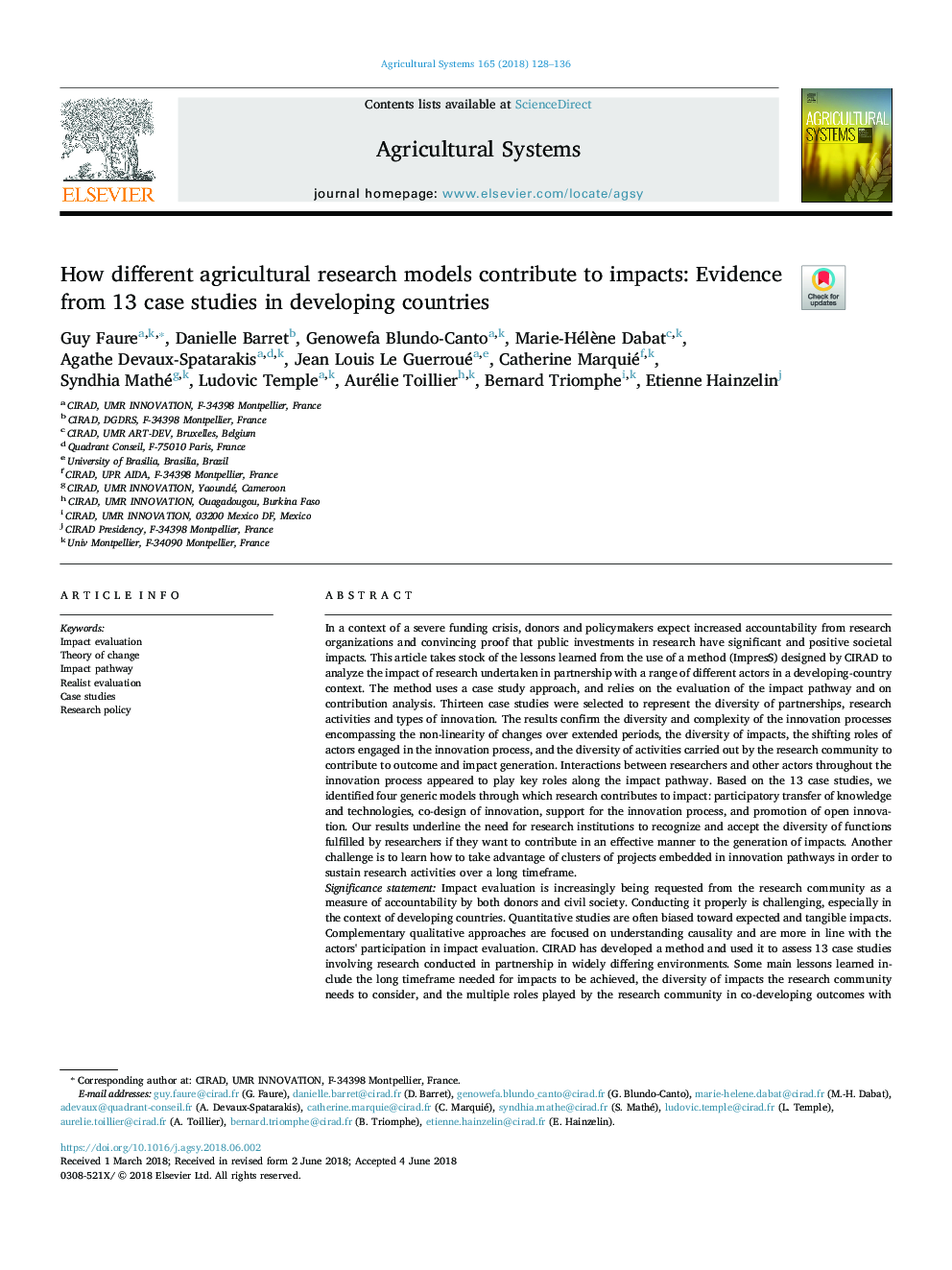| Article ID | Journal | Published Year | Pages | File Type |
|---|---|---|---|---|
| 8874910 | Agricultural Systems | 2018 | 9 Pages |
Abstract
Impact evaluation is increasingly being requested from the research community as a measure of accountability by both donors and civil society. Conducting it properly is challenging, especially in the context of developing countries. Quantitative studies are often biased toward expected and tangible impacts. Complementary qualitative approaches are focused on understanding causality and are more in line with the actors' participation in impact evaluation. CIRAD has developed a method and used it to assess 13 case studies involving research conducted in partnership in widely differing environments. Some main lessons learned include the long timeframe needed for impacts to be achieved, the diversity of impacts the research community needs to consider, and the multiple roles played by the research community in co-developing outcomes with diverse stakeholders. Results show that the research community can contribute to impacts by using several models of intervention.
Keywords
Related Topics
Life Sciences
Agricultural and Biological Sciences
Agricultural and Biological Sciences (General)
Authors
Guy Faure, Danielle Barret, Genowefa Blundo-Canto, Marie-Hélène Dabat, Agathe Devaux-Spatarakis, Jean Louis Le Guerroué, Catherine Marquié, Syndhia Mathé, Ludovic Temple, Aurélie Toillier, Bernard Triomphe, Etienne Hainzelin,
